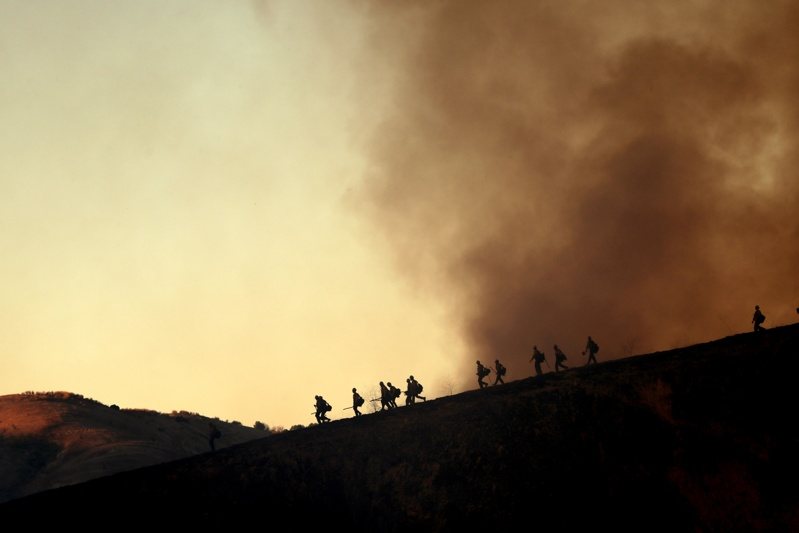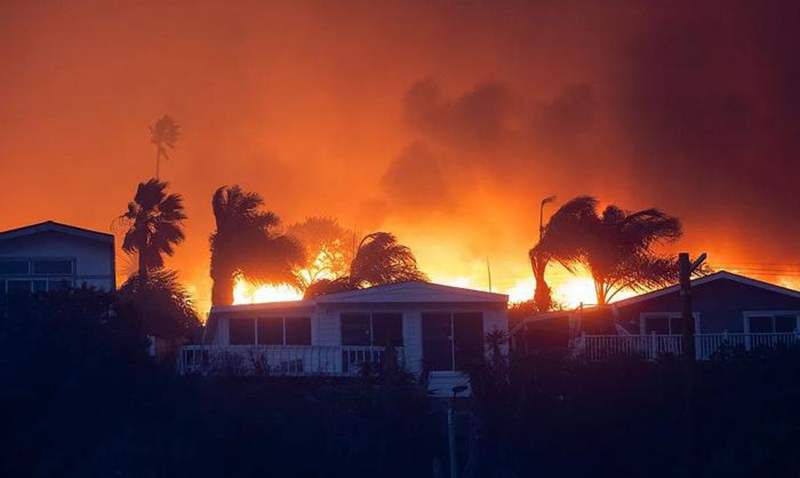Moments of Fire: How to Protect Yourself?
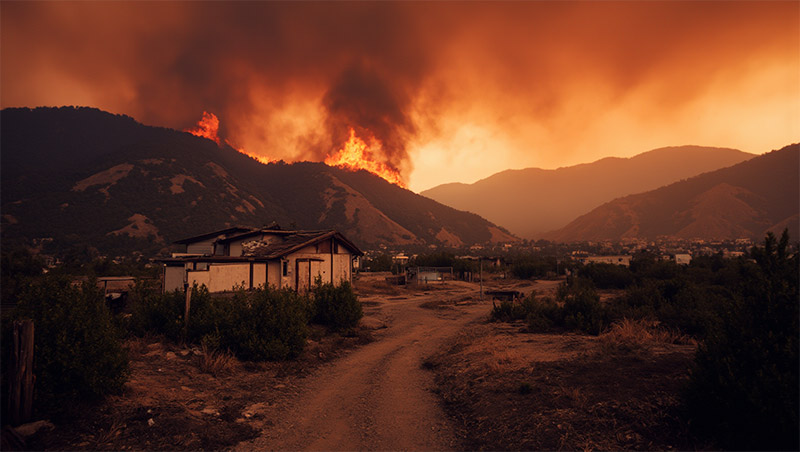
Wildfire Safety Tips
Fire prevention awareness comes first, flame-retardant fabrics provide a shield. This guide will teach you how to protect your life and property when fire strikes.
Introduction
Recently, Los Angeles experienced a devastating wildfire. As of July 10th, multiple wildfires in the Los Angeles area had caused at least 10 fatalities, burned over 152,000 acres of land, destroyed at least 1,000 buildings, and resulted in damages estimated to reach $50 billion. The thick smoke turned daylight into darkness.
In recent years, the frequency of wildfires has been increasing globally, including in the United States. As climate change leads to more frequent and intense wildfires, it is crucial to take measures to prevent these disasters. In this context, knowing how to protect yourself and your family from life and property damage during a fire has become a necessary concern for everyone.
One of the effective methods to defend against wildfire risks in high-risk areas is to use flame-retardant fabrics. These fabrics are designed to resist ignition and slow the spread of flames. They are essential for firefighting protective clothing, interior decoration, and household textiles. Made from flame-retardant fibers, these fabrics provide lasting fire protection that does not wash out, making them a vital safety choice in wildfire-prone areas.
This article aims to introduce effective ways to reduce life and property damage during wildfires. By raising public awareness and using flame-retardant fabrics to build infrastructure, we can minimize the losses caused by wildfires.
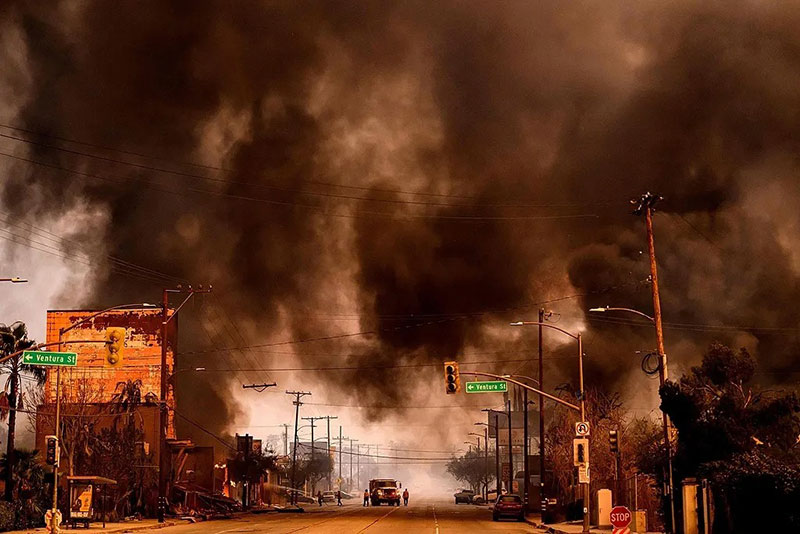
los angeles fires
I. Causes and Risks of Wildfires
Wildfires can be caused by various factors, including natural events like lightning and human activities such as careless use of fire, discarded cigarette butts, and arson.
The behavior of wildfires is influenced by weather, terrain, and flammable materials. Wind significantly impacts the speed of fire spread, often causing the fire to move rapidly and unpredictably. In dry regions, wildfires can spread quickly, leading to severe consequences. Understanding the causes and behavioral patterns of wildfires is key to prevention and response.
1. Common Causes and Factors of Wildfires
- Drought and High Temperatures: Prolonged drought and high temperatures dry out vegetation, providing ample fuel for wildfires.
- Lightning: Lightning sparks are a common natural cause of wildfires, especially during dry seasons.
- Strong Winds: High winds not only accelerate the spread of fires but can also change their direction, making firefighting more difficult.
- Discarded Cigarette Butts: Carelessly discarded cigarette butts are a common human cause of wildfires.
- Improper Use of Fire: Using open flames outdoors (e.g., barbecues, campfires) without taking adequate fire prevention measures can easily start a fire.
- Equipment Failure: Short circuits in power lines, transformer explosions, etc., can also trigger fires.
2. Threats and Disasters Caused by Wildfires
- High Temperatures and Smoke: The intense heat and toxic gases in the smoke pose direct threats to life.
- Destruction of Homes and Infrastructure: Wildfires can destroy homes, farmland, forests, and other critical infrastructure.
- Economic Losses: In addition to direct property losses, wildfires cause indirect economic losses such as production halts and transportation disruptions.
- Habitat Destruction: Wildfires severely damage the habitats of plants and animals, even causing species extinction.
- Soil Erosion: Burned land struggles to restore vegetation, leading to increased soil erosion.
- Air Pollution: The smoke and harmful gases from wildfires severely pollute air quality, affecting residents’ long-term health.
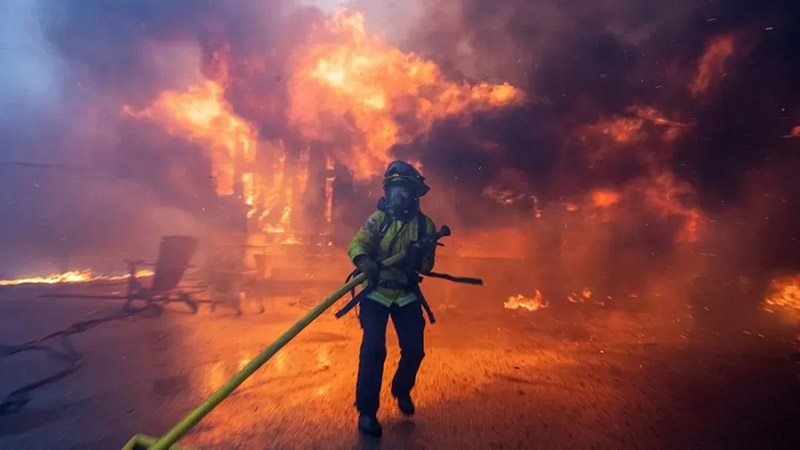
Flame-Retardant Fabrics
Prevention is key to addressing wildfire threats. Ordinary clothing provides little to no protection during a fire, as it ignites easily and accelerates the spread of flames, putting people in danger. Therefore, wearing clothing made from fire-resistant fabrics is essential. Companies like BEGOODTEX develop flame-retardant fabrics that not only resist ignition but also slow the spread of flames, buying precious escape time and providing critical safety protection.
BEGOODTEX’s article on the flame-retardant mechanism and application of flame-retardant textiles explains how these materials effectively reduce fire risks.
In addition, firefighters, who are always at the front line during fires, wear professional firefighting suits with excellent fire resistance and high-temperature endurance. These suits act as the most important barrier to protect firefighters’ lives. They can withstand direct threats from high-temperature flames and effectively block smoke and toxic gases, providing essential protection for firefighters executing rescue missions in extreme danger.
Beyond professional protection, individuals and families should also strengthen their fire prevention measures.
II. Preventive Measures Before a Fire
Measure 1: Personal Behavior Guidelines
- Avoid Fire Sources: Do not smoke or discard cigarette butts outdoors. Ensure cigarette butts are completely extinguished if you must smoke.
- Control Open Flames: Avoid using open flames during dry, windy weather.
- Carry Firefighting Tools: When outdoors, carry simple firefighting equipment such as fire extinguishers or water sprayers.
- Manage Fire Sources: Ensure all fire sources are completely extinguished after camping or barbecuing.
Measure 2: Home Safety Protection
- Clear Combustibles Around the House: Regularly clean leaves, dry grass, and other flammable materials from roofs and yards. Remove dead plants, grass, and weeds within 30 feet of your home.
- Maintain Trees: Trim branches to keep them at least 10 feet above the ground and ensure they are spaced 10 feet apart.
- Plant Fire-Resistant Greenery: Choose plants with high fire resistance, such as succulents.
- Install Fireproof Doors and Windows: Use fireproof materials for curtains and furniture.
- Create Firebreaks: Use non-flammable materials like gravel or stones to create firebreaks in your landscaping.
- Regular Maintenance: Regularly inspect and maintain your fire defense space by cleaning gutters, removing debris, and preventing overgrowth.
Measure 3: Use Fire-Resistant Materials and Flame-Retardant Fabrics
The recent devastating fires in Los Angeles destroyed over 1,000 buildings and caused about $50 billion in damage, highlighting the increasing frequency and intensity of wildfires. This underscores the importance of using fire-resistant materials and flame-retardant fabrics in various applications to improve safety and minimize losses in fire-prone areas.
Flame-retardant textiles are essential for various applications, including interior decor, curtains, and protective clothing. Their effectiveness lies in their unique combustion mechanism, which inhibits the chemical reactions of the burning process. For example, inherently flame-retardant fabrics are made from permanent fibers that provide durable fire protection, ensuring that the flame-retardant properties do not wear off over time. This durability makes them a safe choice in environments where fire safety is a concern.
Measure 4: Develop and Practice Evacuation Plans
Creating and practicing an evacuation plan is crucial for ensuring safety during a fire, especially in wildfire-prone areas. The plan should be comprehensive, detailing escape routes, assembly points, and communication strategies for all family members.
- Identify Escape Routes: Establish multiple escape routes from your home and practice them regularly.
- Set Assembly Points: Designate a safe location outside your home where everyone can gather after evacuation.
- Communication Plan: Ensure all family members have a way to communicate during emergencies.
- Regular Drills: Conduct regular drills to ensure everyone knows the evacuation plan.
- Participate in Fire Drills: Actively join community-organized fire drills.
III. Emergency Measures During a Fire
Measure 1: Quick Reaction and Emergency Kit Preparation
Preparing for wildfires is essential, especially in areas prone to such disasters. An effective emergency kit can play a crucial role in ensuring safety and survival during a wildfire. A key component of this kit is flame-retardant clothing, which provides an extra layer of protection for individuals trapped in a fire. Other essential items include:
- Flame-Retardant Clothing: Long-sleeve shirts, pants, and hats made from flame-retardant fabrics to protect your skin from high heat and flames.
- Masks: Include N95 masks or respirators to protect your lungs from harmful smoke and particles.
- First Aid Supplies: A well-stocked first aid kit with burn ointments, bandages, and disinfectants.
- Water and Hydration Supplies: At least a three-day water supply and portable water purification systems.
- Emergency Food Supply: Non-perishable foods such as energy bars, canned goods, and dried fruits.
- Flashlight and Batteries: Reliable flashlights and spare batteries to navigate in the dark.
- Important Documents: Keep copies of essential documents like IDs, insurance policies, and medical records in a waterproof container.
Measure 2: Quick Evacuation and Seeking Assistance
When a wildfire occurs near your home, evacuate immediately and orderly by following these steps:
- Call Emergency Services: Report the fire promptly.
- Cut Off Fire Sources: Turn off electricity and gas in your home.
- Protect Important Documents: Carry important documents and valuables or store them in a fireproof container.
- Wear Protective Clothing: Use clothing made from fire-resistant materials for better protection.
- Protect Your Respiratory Tract: Cover your nose and mouth with a wet towel or cloth to prevent inhaling toxic smoke.
- Choose the Right Escape Route: Evacuate against the wind and away from the fire’s direction. Avoid downwind routes.
- Seek Natural Firebreaks: Open areas and rivers can act as natural firebreaks. Avoid canyons and dense vegetation.
- If Trapped: Dig a depression, cover yourself with soil or flame-retardant fabric, and shield your face to breathe.
- Signal for Help: Use whistles or mirrors to alert rescuers.
- Cooperate with Rescuers: Do not return to the fire scene prematurely.
Measure 3: Monitor Fire Situation and Seek Medical Attention
- Stay Updated: Keep track of the fire’s location and movement through local news, social media, and emergency services.
- Seek Immediate Medical Attention: Treat any burns or injuries caused by the fire.
IV. Post-Fire Recovery and Reconstruction
Post-disaster recovery is a lengthy and challenging process that requires the collective efforts of society. The following measures can help:
Measure 1: Safety Assessment and Psychological Support
- Wait for Safety Confirmation: Do not return home immediately after a fire; wait for professionals to declare it safe.
- Clean Up the Fire Scene: Remove residual fire sources and hazardous items.
- Seek Psychological Counseling: Help disaster victims overcome psychological trauma.
- Participate in Community Reconstruction: Face post-disaster challenges together with neighbors.
Measure 2: Future Prevention
- Learn from Experience: Address the issues exposed during the fire and improve fire prevention measures.
- Enhance Fire Awareness: Conduct regular fire education.
- Use Fire-Resistant Materials: Prioritize high-performance protective materials such as BEGOODTEX’s flame-retardant fabrics in home reconstruction.
Measure 3: Community Preparation and Support
- Strengthen Community Fire Strategies: Improve community fire defense strategies and preparedness plans.
- Educational Campaigns: Raise awareness of individual responsibilities in fire prevention and actions to take during a fire.
- Learn Correct Escape Routes: Knowing the right escape route, such as against the wind, can save lives.
Conclusion
Although wildfires are inevitable, scientific prevention measures and effective response strategies can minimize their impact. Individuals, families, and communities should work together to enhance fire awareness and proactively address fire threats. Flame-retardant materials play a crucial role in fire safety, and companies like BEGOODTEX are making significant contributions to protecting life and property.

